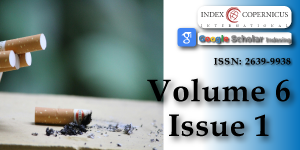Ceftriaxone in pediatrics: Indication, adverse drug reaction, contraindication and drug interaction
Main Article Content
Abstract
Ceftriaxone is having many uses and useful “third-generation” cephalosporin that necessitates being given every day. Ceftriaxone acts as binds to one or many of the penicillin-binding proteins which inhibit the final transpeptidoglycan step of peptidoglycan synthesis in the bacterial cell wall, thus inhibiting biosynthesis and arresting cell wall assembly resulting in bacterial cell death.
Ceftriaxone-associated biliary adverse events in children less than eighteen years cause biliary pseudolithiasis and scarcely nephrolithiasis often happen in children less than eighteen years after receiving overdoses of ceftriaxone. Ceftriaxone perhaps binds with calcium and figure insoluble chelation leading to biliary pseudolithiasis. Cholelithiasis, increased biliary thickness, and pseudolithiasis rarely happen in a period of being a child, but there are two modes of distribu¬tion described by two peaks, the first being at an early stage of development and the second is a period of life when a child develops into an adult. Hyperbilirubinemia is significantly contraindicated for neonates administrated ceftriaxone, particularly premature neonates, because of the displacement of bilirubin from albumin-binding sites and increase in blood concentrations of free bilirubin. A child than one month old and a child less than twelve-month old in special are at great risk of poor results because of bilirubin encephalopathy. Coincident administrations of ceftriaxone with aminoglycosides such as gentamycin and loop diuretics (furosemide) perhaps increase the risk of nephrotoxicity (rapid degeneration in the kidney function to the toxic outcome of double or triple medications). Coincident administrations of ceftriaxone with anticoagulant medications such as warfarin are associated with bleeding due to increased prothrombin times, which is reversible with vitamin K.
Article Details
Copyright (c) 2022 Bereda G.

This work is licensed under a Creative Commons Attribution 4.0 International License.
Bereda G. Clinical Pharmacology of Ceftriaxone in Paediatrics. J Biomed Bio Sci. 2022; 2: 1-8.
Neonatal Formulary. Seventh edition. John Wiley & Sons, Ltd. The Atrium, Southern Gate, Chichester, West Sussex, PO19 8SQ, UK. 2015; 140-141.
Lutsar I, Friedland IR. Pharmacokinetics and pharmacodynamics of cephalosporins in cerebrospinal fluid. Clin Pharmacokinet. 2000; 39: 335–343. PubMed: https://pubmed.ncbi.nlm.nih.gov/11108433/
Young TE, Mangum B. NEOFAX twenty-third edition. Antimicrobials. Montvale NJ 07645. 2010; 32-33.
European Medicines Agency. Annex III. Summary of product characteristics, labelling and package leaflet. 2015. http://www.ema.europa.eu/docs/en_GB/document_library/Referrals_document/Rocephin_30/WC500160113.pdf
Gökçe S, Yildirim M, Erdoğan D. A retrospective review of children with gallstones: single-center experience from Central Anatolia. Turk J Gastroenterol. 2014; 25: 46–53. PubMed: https://pubmed.ncbi.nlm.nih.gov/24918130/
Rivkin AM. Hepatocellular enzyme elevations in a patient receiving ceftriaxone. Am J Health Syst Pharm. 2005; 62: 2006–2010. PubMed: https://pubmed.ncbi.nlm.nih.gov/16174837/
Biner B, Oner N, Celtik C, Bostancioğlu M, Tunçbilek N, et al. Ceftriaxone-associated biliary pseudolithiasis in children. J Clin Ultrasound. 2006; 34: 217-222. PubMed: https://pubmed.ncbi.nlm.nih.gov/16673364/
Shen X, Liu W, Fang X, Jia J, Lin H, et al. Acute kidney injury caused by ceftriaxone-induced urolithiasis in children: a single-institutional experience in diagnosis, treatment and followup. Int Urol Nephrol. 2014; 46: 1909-1914. PubMed: https://pubmed.ncbi.nlm.nih.gov/24879561/
Avci Z, Koktener A, Uras N, Catal F, Karadag A, et al. Nephrolithiasis associated with ceftriaxone therapy: a prospective study in 51 children. Arch Dis Child. 2004; 89: 1069-1072. PubMed: https://pubmed.ncbi.nlm.nih.gov/15499067/
Gökçe S, Yildirim M, Erdoğan D. A retrospective review of children with gallstones: single-center experience from Central Anatolia. Turk J Gastroenterol. 2014; 25: 46–53. PubMed: https://pubmed.ncbi.nlm.nih.gov/24918130/
Alehossein M, Sotoudeh K, Nasoohi S, Salamati P, Akhtare-Khavari H. Ceftriaxone induced biliary pseudocholelithiasis in children. Report of 14 cases. Iran J Pediatr. 2008; 18: 31-37.
Citak A, Garratty G, Ucsel R, Karabocuoglu M, Uzel N. Ceftriaxone-induced haemolytic anaemia in a child with no immune deficiency or haematological disease. J Paediatr Child Health. 2002; 38: 209-210. PubMed: https://pubmed.ncbi.nlm.nih.gov/12031011/
Pacifici GM. Clinical Pharmacology of Ceftriaxone in Infants and Children. J Target Drug Deliv. 2019; 3: 001-013.
Maria Pacifici G, Marchini G. Clinical Pharmacology of Ceftriaxone in Neonates and Infants: Effects and Pharmacokinetics. Int J Pediatr. 2017; 5: 5751-5778.
Gulian JM, Dalmasso C, Pontier F, Gonard V. Displacement effect of ceftriaxone on bilirubin bound to human serum albumin. Chemotherapy. 1986; 32: 399–403. PubMed: https://pubmed.ncbi.nlm.nih.gov/3757585/
Abu Teir MM, Ghitan J, Abu-Taha MI, Darwish SM, Abu-Hadid MM. Spectroscopic approach of the interaction study of ceftriaxone and human serum albumin. J Biophys Struct Biol. 2014; 6: 1–12.
Schaad UB, Tschäppeler H, Lentze NJ. Transient formation of precipitations in the gallbladder associated with ceftriaxone therapy. Pediatr Infect Dis. 1986; 5: 708–710. PubMed: https://pubmed.ncbi.nlm.nih.gov/3540889/
Baddour LM, Wilson WR, Bayer AS, Fowler VG, Jr., Bolger AF, et al. Infective endocarditis: diagnosis, antimicrobial therapy, and management of complications: a statement for Healthcare Professionals From the Committee on Rheumatic Fever, Endocarditis, and Kawasaki Disease, Council on Cardiovascular Disease in the Young, and the Councils on Clinical Cardiology, Stroke, and Cardiovascular Surgery and Anesthesia, American Heart Association: Endorsed by the Infectious Diseases Society of America. Circulation. 2005; 11: e 394–433. PubMed: https://pubmed.ncbi.nlm.nih.gov/15956145/
Young TE, Mangum B. NEOFAX. Antimicrobials. Penicillin G. 23rd edition 2010. Thomson Reuters. 2010; 32-33.
Zindel LR, Kranzler HR. Pharmacotherapy of alcohol use disorders: seventy-five years of progress. J Stud Alcohol Drugs Suppl. 2014; 75: 79–88. PubMed: https://pubmed.ncbi.nlm.nih.gov/24565314/
Dong H, Zhang J, Ren L, Liu Q, Zhu S. Unexpected death due to cefuroxime-induced disulfiram-like reaction. Indian J Pharmacol. 2013; 45: 399–400. PubMed: https://pubmed.ncbi.nlm.nih.gov/24014919/
Cina SJ, Russell RA, Conradi SE. Sudden death due to metronidazole/ethanol interaction. Am J Forensic Med Pathol. 1996; 17: 343–346. PubMed: https://pubmed.ncbi.nlm.nih.gov/8947362/
Zareh M, Davis A, Henderson S. Reversal of warfarin-induced hemorrhage in the emergency department. West J Emerg Med. 2011; 12: 386. PubMed: https://pubmed.ncbi.nlm.nih.gov/22224125/

